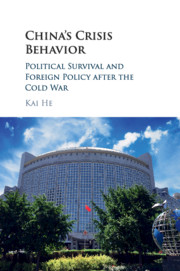Book contents
- China’s Crisis Behavior
- Praise for China’s Crisis Behavior
- China’s Crisis Behavior
- Copyright page
- Dedication
- Contents
- Figures and tables
- Book part
- 1 China’s foreign policy crises after the Cold War
- 2 Political survival and China’s crisis behavior
- 3 TheYinheincident and the Taiwan Strait crisis
- 4 The embassy bombing incident and the EP-3 midair collision
- 5 TheImpeccableincident and the boat collision crisis
- 6 The Scarborough Shoal dispute and the Diaoyu/Senkaku purchase crisis
- 7 Conclusion: leadership transition and China’s future crisis behavior
- Select bibliography
- Index
- References
Select bibliography
Published online by Cambridge University Press: 05 March 2016
- China’s Crisis Behavior
- Praise for China’s Crisis Behavior
- China’s Crisis Behavior
- Copyright page
- Dedication
- Contents
- Figures and tables
- Book part
- 1 China’s foreign policy crises after the Cold War
- 2 Political survival and China’s crisis behavior
- 3 TheYinheincident and the Taiwan Strait crisis
- 4 The embassy bombing incident and the EP-3 midair collision
- 5 TheImpeccableincident and the boat collision crisis
- 6 The Scarborough Shoal dispute and the Diaoyu/Senkaku purchase crisis
- 7 Conclusion: leadership transition and China’s future crisis behavior
- Select bibliography
- Index
- References
- Type
- Chapter
- Information
- China's Crisis BehaviorPolitical Survival and Foreign Policy after the Cold War, pp. 152 - 168Publisher: Cambridge University PressPrint publication year: 2016



